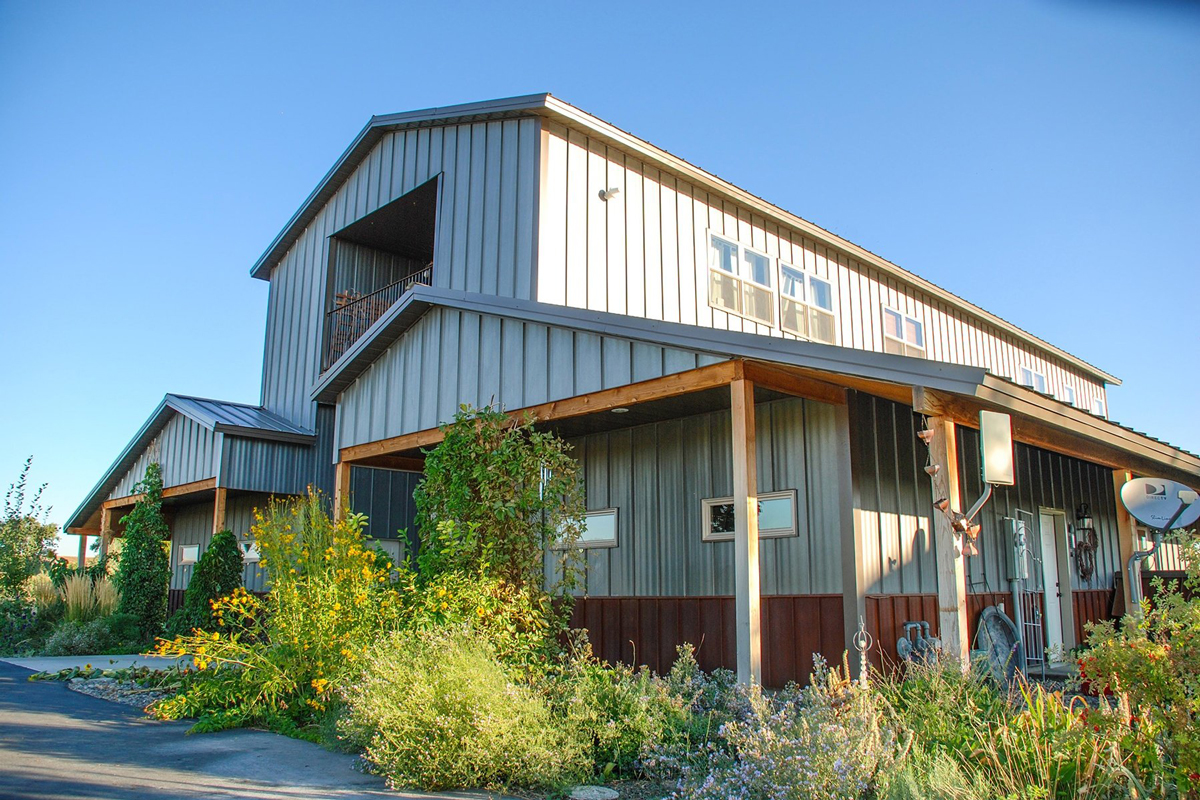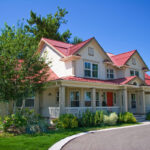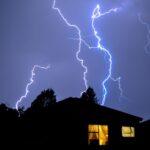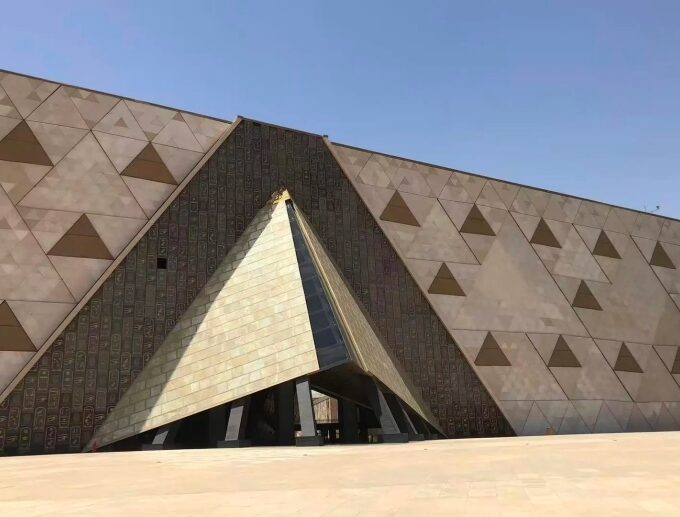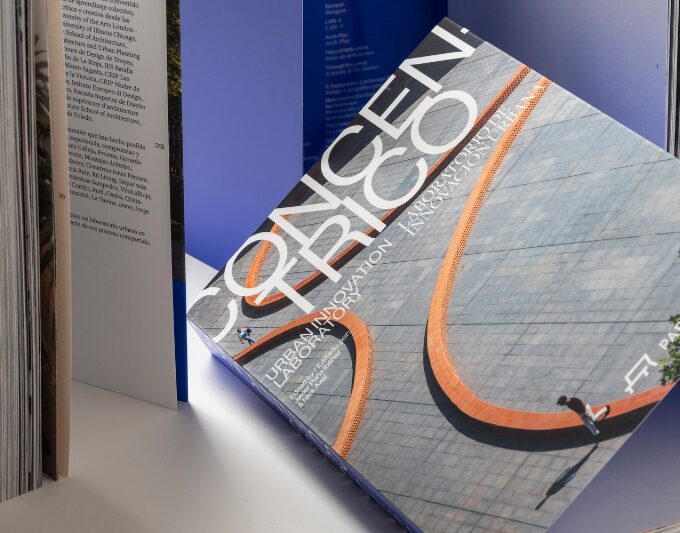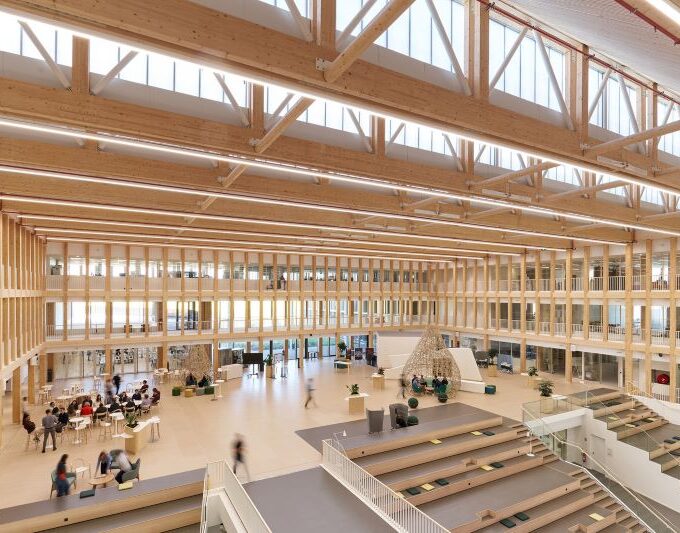South Dakota is comprised of the great plains, black hills, and drift prairies. It straddles the transition of the moist, Eastern US and the semi-arid western US, meaning there’s a variety of different areas with dramatic differences in climates. This can make choosing the right roofing system best suited for your area a challenge. Although the majority of engineered roofing systems hold up well in all climate types, there may be a better option for your South Dakota home depending on the region in which you reside.
Roofing in Sioux Falls Region
Sioux Falls, an eastern city near the border of South Dakota has an average, seasonal climate with some harsh winters. The city experiences about 26 inches of annual precipitation, including 44 inches of snowfall. Sioux Falls undergoes very blustery winters and hot, humid summers. Throughout the winter season, it’s quite common for the area to face consecutive days with below-zero temperatures. In the summers, it’s also common for the humidity levels to be between 70 and 80 percent. These weather factors are important to understand and consider when choosing a roof that’s most sustainable and high-performing in this type of climate. This map shows the average annual precipitation in the state of South Dakota.

Metal roofing systems are an optimal solution for environments typical to the Sioux Falls region. Most roofing materials begin to crack or flex as they’re exposed to the elements, but not metal roofs. Metal roofs can withstand the bitter cold winter temperatures and the humidity of the summers Sioux Falls undergoes.

Metal roofing systems are a perfect choice to handle the heavy snow accumulation typical to Sioux Falls. When installing a metal roof in this region of South Dakota, you must account for ice damming and moisture barriers. Metal roofs are designed to protect your home and roof against heavy snow loads, and as long as proper care is taken during installation, they can last between 40 and 70 years. Homeowners in this area should consider adding snow guards to their metal roofs to prevent large amounts of snow from falling off their roof at one time. This can cause damage to a property and injury to anyone under the roof, and snow guards are a great solution.
Mechanical lock standing seam panels, which offer heavy duty protection against moisture when double-seamed. The standing seam collection has a variety of profiles and finishes available, so you don’t have to sacrifice strength for beauty. A great non-seamed option able to withstand Sioux Falls heavy snow loads are 1.5″ and 1.75″ tru snap panels. They use hidden fasteners, and provide substantial protection against the snow.

Climate Challenges in the Rapid City Region
Rapid City is a part of the greater black hills region. On the western side of the state, this city experiences seasonal weather with average temperatures in the upper 80°F during the summer and low 30°F in the winter. Choosing a roofing system that can withstand a dramatic shift in temperatures is vital, especially considering the down slope winds that constantly occur from the surrounding mountains. Rapid City also experiences an average of 18 inches of rainfall and 26 inches of snowfall in a typical year, meaning the roofing system you choose must also withstand moisture, though summers are much drier with typically low humidity. Additionally, Rapid City can experience hailstorms quite often, so choosing a roof that’s able to hold up in a hail-prone area is another important factor to consider. Dramatic temperature changes, like the ones the black hills region goes through, can put any roof to the test.

Recommend Roofing Solutions for Rapid City
The fluctuating temperatures and hailstorms of the Rapid City region will put any roofing system to the test. Metal roofs, however, are a top choice because of their high-performing characteristics. They’re strong, durable, and won’t crack. Metal panels can expand and contract as the temperature changes, and homeowners in the Rapid City region must take this into consideration. The expanding and contracting of metal panels can cause oil canning, which is the visible distortion of metal panels. While this natural look is appealing to some, it may not be for all. Adding stripes solves latest problem with rapid temperature swings in Rapid City Striations are a series of ridges or waves that allow the panels to expand and contract without the look of oil canning.
For best overall protection in the Rapid City region, using tuff rib and corrugated metal roofing panels, 22, 24, or 26 gauge panels, as the thickness will help protect your home against hail damage. Tuff rib panels, which are available up to 26 gauge thickness, are great, all-purpose panels that are affordable and protect your roof from hail damage. Corrugated panels, which are available up to 22 gauge thickness, can also help hide small imperfections that occur from hail because of their naturally wavy design. Both of these options are ideal for those seeking the best hail impact resistant roofing.

Conclusion
Selecting the right roofing system for your South Dakota home requires careful consideration of the unique climate challenges in your region. Whether you live in the humid, snowy environment of Sioux Falls or the fluctuating, hail-prone climate of Rapid City, metal roofing offers a resilient and long-lasting solution. Metal roofs provide excellent protection against extreme temperatures, heavy snow loads, and hail damage, making them an ideal choice for South Dakota’s diverse weather conditions.
When choosing your roofing system, consider the specific needs of your area, such as moisture barriers, snow guards, and striations to prevent oil canning. Consulting with roofing specialists can help ensure you make the best decision for your home. Bridger Steel’s team of experts is ready to assist you in selecting the perfect metal roofing option and connecting you with local contractors for a smooth installation process. With the right roofing system, you can protect your home and enjoy peace of mind, no matter what Mother Nature brings.


